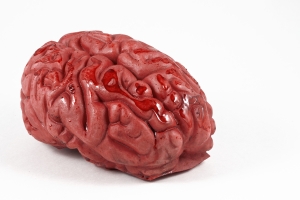The results from a study by researchers at The University of Auckland's Centre for Brain Research may hold important clues into why there is less plasticity in brains affected by Parkinson's and Alzheimer's disease, and links to insulin resistance and diabetes.
The major five-year project to understand how stem cells start and stop migrating in the brain has also helped to unlock the secrets of how stem cells migrate during development and in adulthood.
The study revealed new information on how connectivity between brain cells is improved or worsened, says senior study author, Dr Maurice Curtis who conceived and directed the research. The experiments were carried out at the Centre for Brain Research laboratories by Dr Hector Monzo. Collaborators included a director of the CBR, Distinguished Professor Richard Faull, Dr Thomas Park, Dr Birger Dieriks, Deidre Jansson and Professor Mike Dragunow.
"We have begun testing new novel drug compounds that target how polysialic acid is removed from the cell in the hope of improving neuron connectivity," says Dr Curtis.
He explains that stem cells in the brain are immature brain cells that must migrate from their birthplace to a position in the brain where they will connect with other brain cells, turn into adult brain cells (neurons) and become part of the brain's circuitry.
"Even once the neuron has found its location, the neuron's tentacles (or dendrites) need to forage to find other neurons to connect with to form circuits. This would be easy except that in the adult brain the cells are surrounded by a fairly rigid matrix (extracellular matrix) and so migration or foraging becomes almost impossible in this high friction environment."
"The way the cell overcomes this 'friction' is by placing large amounts of a special slippery molecule called 'polysialic acid-neural cell adhesion molecule' onto the cell surface," says Dr Curtis. "This allows the cell to migrate or forage with only a fraction of the friction it once had and this also reduces the energy requirements of the cell."
Once the cell has migrated to its destination, the slippery coating is removed and the cell becomes locked in place ready to connect with other cells. In the case of the dendritic foraging, the polysialic acid must be removed in order for the dendrite to connect with another cell (synapse formation).
"We have known for at least 20 years that this process occurs but despite extensive studies by a number of groups internationally we have been in the dark about what controls this process," he says. "Studies in my laboratory have demonstrated what happens to the slippery molecules once the cell no longer needs them."
There were three possibilities for this process: that enzymes cut them off the outside of the cell; that the friction wears it off the cell; or the cell internalises the slippery substance and recycles it ready for future use.
"For the past five years, we have systematically studied how this process is controlled," says Dr Curtis. "Our findings have demonstrated that cells internalise the slippery molecule after receiving two specific cues."
One of these cues is from collagen, which makes up part of the rigid structure outside of the cell, and the other is from a gaseous molecule called nitric oxide, which triggers the outer membrane of the cell to internalise the slippery molecules.
"What we also discovered is that when there is an increased amount of insulin and insulin-like growth factor 1 (which has some similar functions to insulin) present in the culture, the cell cannot internalise the slippery molecules and instead they remain on the cell surface."
"The key to the breakthrough was in determining that the process by which the polysialic acid is added to the cell surface was so persistent that it needed to be stopped in order to study how the polysialic acid was removed," says Dr Curtis. "This required extensive trialling of many different cell growth conditions, enzyme concentrations and growing the cells in many different extracellular matrices."
This is interesting because it is well known that in Parkinson's disease and Alzheimer's disease the brain is less sensitive to insulin, he says.
"In our studies in cells the insulin blocks the removal of polysialic acid and therefore the cell cannot connect properly and form synapses with other nearby cells."
"This may hold major clues to why there is less plasticity in brains affected by Parkinson's and Alzheimer's disease in adults as well as helping to unlock the secrets of how stem cells migrate during development of the brain", says Dr Curtis.
The Gus Fisher Postdoctoral Fellowship, the Auckland Medical Research Foundation and the Manchester Trust were the main sponsors of this research work.
The study results were published online in an 'ahead of print' version of The Journal of Neurochemistry, which you can acceess here.
"Insulin and IGF1 modulate PSA-NCAM turnover in a process involving specific extracellular matrix components", by Hector J. Monzo, Thomas I. H. Park, Birger Victor Dieriks, Deidre Jansson, Richard L. M. Faull, Mike Dragunow, Maurice A. Curtis.
Caption: The brain of people affected by Parkinson's or Alzheimer's disease is less sensitive to insulin. Insulin blocks the removal of polysialic acid, a substance that must be removed for brain cells to connect properly and form synapses.
- Suppliers
- New to MedicalSearch? Book a Demo
- Advertise with us
- Login
- Email Marketing
- Buyers
- Get Quotes
- Articles & Ideas
- Login
- Subscribe to newsletter
- My Details
- Get Quotes
- Accident & Emergency Care
- Aged Care & Disability
- Anaesthesia & Respiratory Care
- Beauty & Wellness
- Cardiology & Cardiac Surgery
- Commercial Cleaning & Laundry Supplies
- Dental Care & Oral Surgery
- Diagnostic Instruments & Medical Imaging
- Disinfection & Sterilisation
- ENT & Audiology
- Gynaecology & Obstetrics
- Homecare & Consumer Medical
- Hospital Equipment & Supplies
- Intensive Care Unit
- Laboratory & Pathology
- Medical Apparel
- Medical Devices & Products
- Medical Fridges & Freezers
- Medical Storage & Filing
- Medical Waste Management
- Optometry & Ophthalmology
- Orthopaedics & Podiatry
- Paediatrics & Neonatology
- Patient Monitoring & Management
- Physiotherapy & Rehabilitation
- PPE & Infection Control
- Single Use Medical Consumables
- Surgical Tools & Supplies
- Treatment Beds, Tables & Couches
- Veterinary Equipment
- Wheelchairs & Mobility Aids
- Get Quotes
- Accident & Emergency Care
- Aged Care & Disability
- Anaesthesia & Respiratory Care
- Beauty & Wellness
- Cardiology & Cardiac Surgery
- Commercial Cleaning & Laundry Supplies
- Dental Care & Oral Surgery
- Diagnostic Instruments & Medical Imaging
- Disinfection & Sterilisation
- ENT & Audiology
- Gynaecology & Obstetrics
- Homecare & Consumer Medical
- Hospital Equipment & Supplies
- Intensive Care Unit
- Laboratory & Pathology
- Medical Apparel
- Medical Devices & Products
- Medical Fridges & Freezers
- Medical Storage & Filing
- Medical Waste Management
- Optometry & Ophthalmology
- Orthopaedics & Podiatry
- Paediatrics & Neonatology
- Patient Monitoring & Management
- Physiotherapy & Rehabilitation
- PPE & Infection Control
- Single Use Medical Consumables
- Surgical Tools & Supplies
- Treatment Beds, Tables & Couches
- Veterinary Equipment
- Wheelchairs & Mobility Aids
Trusted by 520,000 Australian medical buyers
Buyers
- Discover products & solutions
- Login
- Subscribe To Newsletter
- Browse All Products
- Read Articles
Suppliers
Advertise
- Promote your products & solutions
- New to MedicalSearch? Book a Demo
- Login / Forgot Password
- Advertise Your Products
- Success Stories
- Email Marketing
- Suppliers
- Advertise with us
- Login
- Email Marketing
- Buyers
- Get Quotes
- Articles & Ideas
- Login
- Subscribe to newsletter
- My Details
Get Quotes
- Accident & Emergency Care
- Aged Care & Disability
- Anaesthesia & Respiratory Care
- Beauty & Wellness
- Cardiology & Cardiac Surgery
- Commercial Cleaning & Laundry Supplies
- Dental Care & Oral Surgery
- Diagnostic Instruments & Medical Imaging
- Disinfection & Sterilisation
- ENT & Audiology
- Gynaecology & Obstetrics
- Homecare & Consumer Medical
- Hospital Equipment & Supplies
- Intensive Care Unit
- Laboratory & Pathology
- Medical Apparel
- Medical Devices & Products
- Medical Fridges & Freezers
- Medical Storage & Filing
- Medical Waste Management
- Optometry & Ophthalmology
- Orthopaedics & Podiatry
- Paediatrics & Neonatology
- Patient Monitoring & Management
- Physiotherapy & Rehabilitation
- PPE & Infection Control
- Single Use Medical Consumables
- Surgical Tools & Supplies
- Treatment Beds, Tables & Couches
- Veterinary Equipment
- Wheelchairs & Mobility Aids
Get Quotes
- Accident & Emergency Care
- Aged Care & Disability
- Anaesthesia & Respiratory Care
- Beauty & Wellness
- Cardiology & Cardiac Surgery
- Commercial Cleaning & Laundry Supplies
- Dental Care & Oral Surgery
- Diagnostic Instruments & Medical Imaging
- Disinfection & Sterilisation
- ENT & Audiology
- Gynaecology & Obstetrics
- Homecare & Consumer Medical
- Hospital Equipment & Supplies
- Intensive Care Unit
- Laboratory & Pathology
- Medical Apparel
- Medical Devices & Products
- Medical Fridges & Freezers
- Medical Storage & Filing
- Medical Waste Management
- Optometry & Ophthalmology
- Orthopaedics & Podiatry
- Paediatrics & Neonatology
- Patient Monitoring & Management
- Physiotherapy & Rehabilitation
- PPE & Infection Control
- Single Use Medical Consumables
- Surgical Tools & Supplies
- Treatment Beds, Tables & Couches
- Veterinary Equipment
- Wheelchairs & Mobility Aids
Trusted by 520,000 Australian medical buyers




